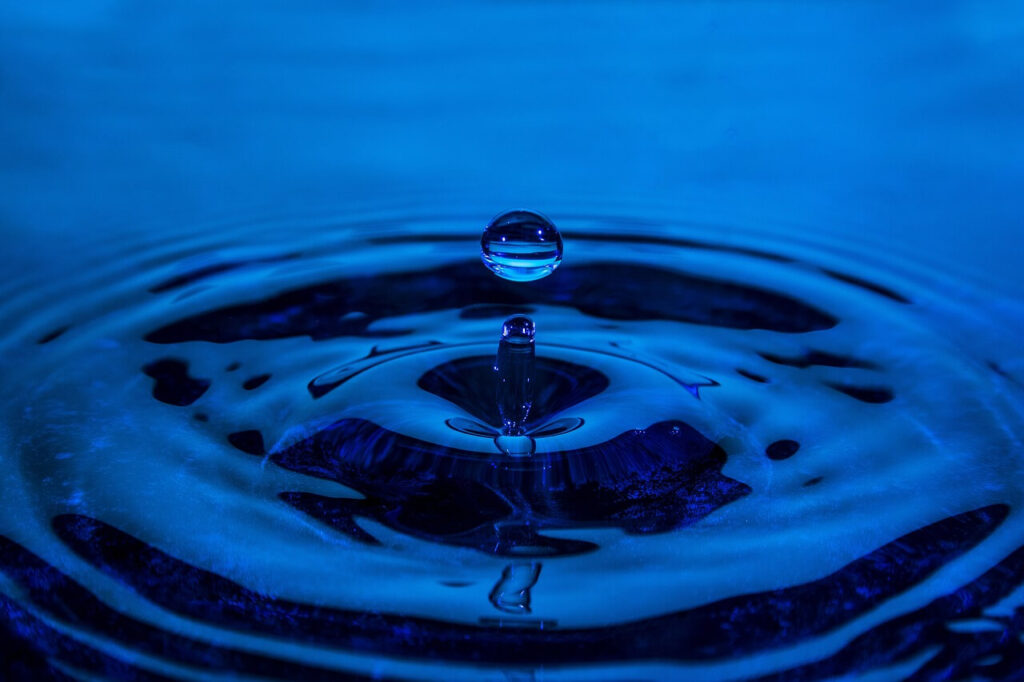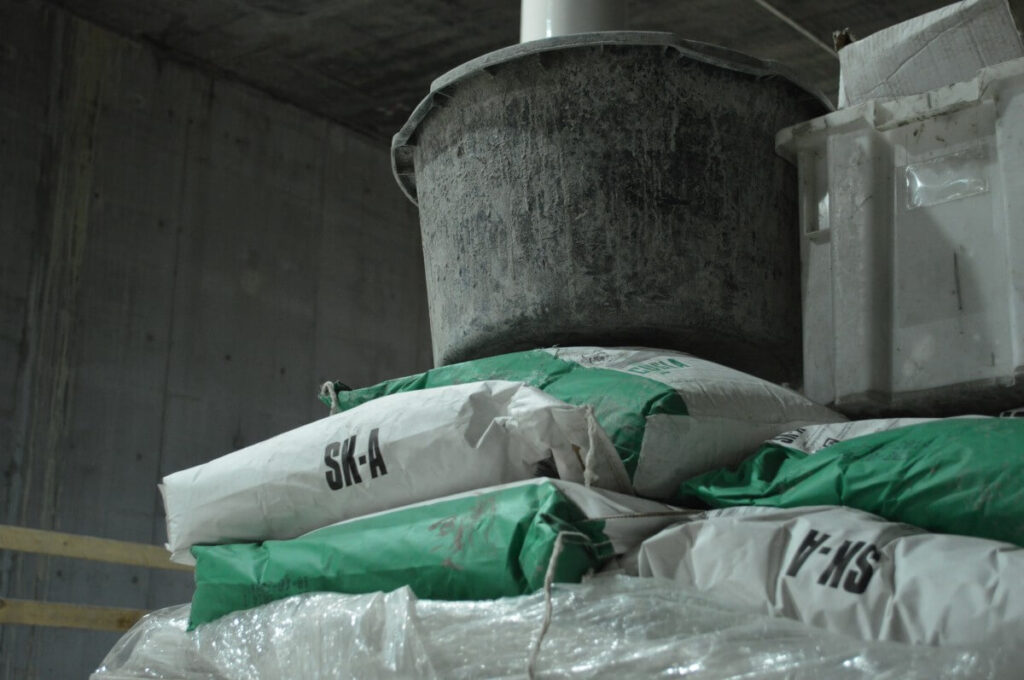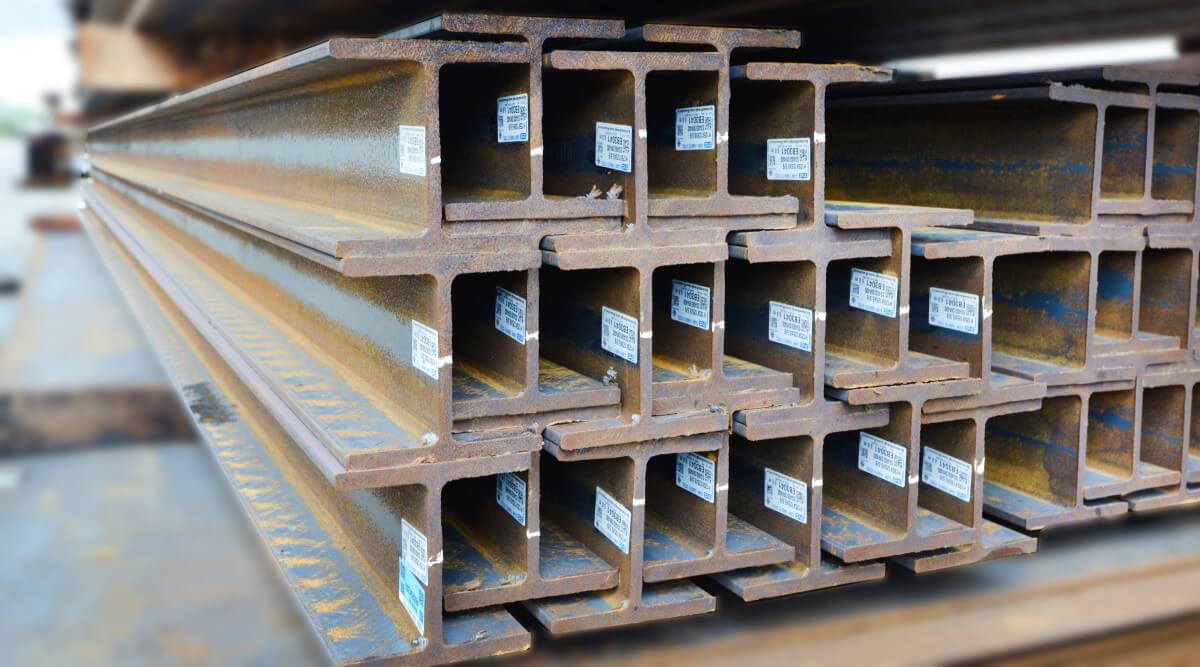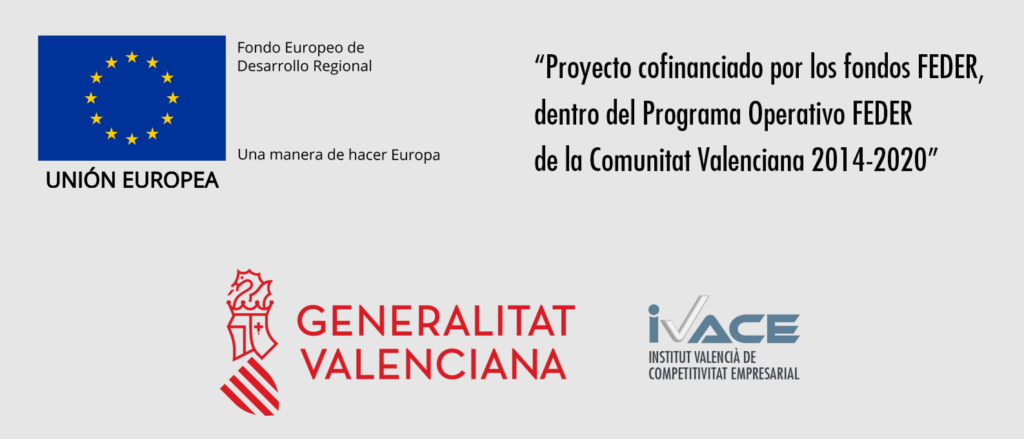Raw Materials
Prestressed concrete prefabricates are composed of two materials working together, each of them providing its characteristic properties to the final elements: concrete and steel.
The ability of these materials to complement their mechanical characteristics is what determines the advantageous properties of prestressed concrete elements, the result of such a peculiar symbiosis.
Therefore, it is important to understand the basics of each of these raw materials.
Concrete
- Determines the quality of the final molded products, especially in relation to their final strength.
- It greatly influences the molding process, so that it will not be possible to obtain the desired geometry if the concrete does not conform to adequate parameters.
For the molding of prefabricated buildings, a high-strength concrete must be used, above 550 kg/m2. In addition, it is of crucial importance to properly dose the main components: water, aggregates, cement and admixtures.

Water
To optimize the resistance, it is advisable to reduce the water supplied as much as possible, although it will not always be possible to achieve the desired shape without a certain degree of water. Normally, around 30-35% of the cement weight will be added, to find a good balance between strength and moldability. In any case, 40% content should never be exceeded.
It is in this aspect that extrusion technology stands out, by admitting concretes with a significantly lower degree of water, not suitable for molding by vibro-compression.

Cement
The dosing of cement is crucial to obtain good results under a good economic performance. Normally, with a good selection of aggregates, a good mixture can be obtained using dosages below 350 kg/m3.
If the final resistance is not sufficient, you can choose to gradually increase this figure. However, if 450 kg/m3 is exceeded, there are most likely other more cost-effective ways of acting, such as improving the dosage of aggregates.

Aggregates
Aggregates play a vital role in the results obtained, so their selection, often subject to geographical limitations, is a key aspect, which is often not given the required attention and resources.
It is interesting to look for an optimal granulometry, which allows to adjust the amount of cement to be provided in the mass to the maximum. The ideal is to adjust, approximately, to the following distribution of calibers:
| 0-1 mm | 25% |
| 1-3 mm | 20% |
| 3-7 mm | 30% |
| 7-14 mm | 25% |

If extrusionis used, it is possible to use larger-caliber aggregates, up to 20mm, also increasing the proportion of coarse aggregates. In any case, it is advisable that the grain shape be as rounded as possible, to facilitate geometric shaping and achieve better results.
- It is important that the aggregates are clean, free of clays and other organic materials.
Granitic aggregates, because they are especially abrasive, can be harmful to the mechanical components of the machines, being especially discouraged for the use of extrusion molding.
Admixtures
The field of admixtures for concrete is of enormous breadth, with constant novelties on the market that invite permanent innovation.
The objective of the admixtures is to alter some of the properties of the concrete, to improve both the molding process and the final properties of the pieces. Some of the most widespread in this area are:
Plasticizers:
they improve the molding capacity of the mixture without the need to increase the amount of water provided. Thus, by reducing the water-concrete ratio, more resistant elements are obtained, while the morphological quality is improved.
Air entrainers:
they improve the workability of the concrete and the durability of the molds, by forming a system of tiny bubbles evenly distributed in the mass.
Set retarders:
useful when it is desired to refine the molding with additional stages, as is the case of the upper and lateral troweling. These additional processes are not viable when environmental conditions favor a very fast setting, as happens in warmer geographies.
Set accelerators:
useful in geographies with low temperatures, in which it is of interest to accelerate the natural setting process for greater efficiency. Heated beds are usually a more effective option, especially in the long term.
Steel
The steel used in the prestressing wires is a high strength steel, capable of reaching tensions of 14000 – 19000 kg/cm2 before breaking.
According to the conformal morphology, it can be used:
Wires:
usually Ø5 mm, used in a wide range of products.
Strands:
of between 3 and 7 filaments, reaching diameters of up to 0.6’, suitable for prefabricated high mechanical resistance, such as extrusion-molded slab.

Do you need professional advice?
Get in touch with our team without obligation. We will help you.


